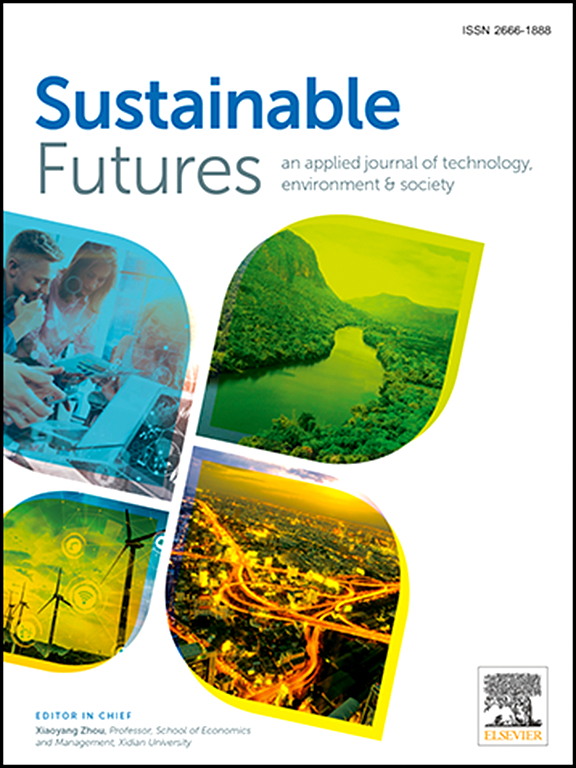Environmental impacts of economic growth: A STIRPAT analysis using machine learning algorithms
IF 3.3
2区 社会学
Q2 ENVIRONMENTAL SCIENCES
引用次数: 0
Abstract
This study examines the environmental consequences of economic growth using four key dimensions – carbon dioxide emissions, freshwater availability, forest area and biodiversity, and introduces a novel methodology to verify the environmental Kuznets Curve (EKC) using pointwise derivatives. Built upon an extended STIRPAT (Stochastic Impacts by Regression on Population, Affluence, and Technology) framework, we expand the original model to include sectoral growth, trade openness and quality of government institutions. Given the high dimensionality of the data and potential nonlinearities in relationships, we employ advanced machine learning regression techniques like ridge, LASSO, elastic net and kernel-regularised least squares (KRLS) to perform segmented analyses across low, lower-middle, upper-middle and high-income countries. Our findings reveal complex, income-dependent environmental impacts, with growth in lower-income groups typically worsening environmental quality and resource depletion, while wealthier countries suffer reduced environmental strain. While the inverted U-shaped EKC is observed in most cases, more complex patterns, such as an M-shaped curve, emerge as countries progress economically. This study provides valuable insights to inform targeted, region-specific sustainability strategies.

经济增长对环境的影响:使用机器学习算法的STIRPAT分析
本研究利用二氧化碳排放、淡水资源、森林面积和生物多样性四个关键维度考察了经济增长对环境的影响,并引入了一种新的方法来验证环境库兹涅茨曲线(EKC)。在扩展的STIRPAT(人口、富裕和技术回归的随机影响)框架的基础上,我们扩展了原始模型,将部门增长、贸易开放和政府机构质量纳入其中。考虑到数据的高维性和潜在的非线性关系,我们采用了先进的机器学习回归技术,如脊、LASSO、弹性网和核正则化最小二乘(KRLS),在低收入、中低收入、中高收入和高收入国家进行分段分析。我们的研究结果揭示了复杂的、依赖收入的环境影响,低收入群体的增长通常会恶化环境质量和资源枯竭,而富裕国家的环境压力则有所减轻。虽然在大多数情况下可以观察到倒u型EKC,但随着国家经济的发展,会出现更复杂的模式,如m型曲线。这项研究为有针对性的、特定区域的可持续发展战略提供了有价值的见解。
本文章由计算机程序翻译,如有差异,请以英文原文为准。
求助全文
约1分钟内获得全文
求助全文
来源期刊

Sustainable Futures
Social Sciences-Sociology and Political Science
CiteScore
9.30
自引率
1.80%
发文量
34
审稿时长
71 days
期刊介绍:
Sustainable Futures: is a journal focused on the intersection of sustainability, environment and technology from various disciplines in social sciences, and their larger implications for corporation, government, education institutions, regions and society both at present and in the future. It provides an advanced platform for studies related to sustainability and sustainable development in society, economics, environment, and culture. The scope of the journal is broad and encourages interdisciplinary research, as well as welcoming theoretical and practical research from all methodological approaches.
 求助内容:
求助内容: 应助结果提醒方式:
应助结果提醒方式:


